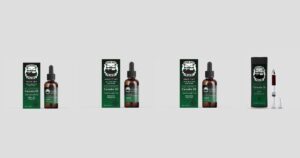Over the years, the narrative that marijuana is commonly laced with fentanyl has become prevalent, stirring fear among consumers and politicians alike. However, a study that combs over data from a decade and millions of examples reveals that this alarming claim lacks substantial evidence, particularly when examining illicit cannabis samples. Let’s explore the study’s findings, dispel misconceptions perpetuated by certain political figures, and highlight the safety of cannabis in regulated markets.
Fentanyl-Laced Marijuana Scare Unveiled
With sensational headlines and alarming anecdotes, the myth of fentanyl-laced marijuana has taken hold in public discourse. Politicians like JD Vance have amplified these fears, using them as leverage points in their campaigns. But how much truth is there to these claims?
Recent research with a study titled “Temporal and spatial trends in fentanyl co-occurrence in the illicit drug supply in the United States: A serial cross-sectional analysis,” conducted by institutions like Harvard Medical School and published in The Lancet Regional Health – Americas, provides clear evidence to the contrary. Analyzing nearly 12 million illicit drug samples over ten years, the study reveals that cannabis is the least likely substance to contain fentanyl. In fact, the presence of fentanyl in marijuana samples is nearly negligible.
The study in question spans a decade, reviewing data from 2013 to 2023. Researchers examined drug chemistry results from illicit substances seized by law enforcement. Among the nine types of drugs analyzed, cannabis showed no significant co-occurrence with fentanyl. The authors concluded in the study that “Our results show no evidence of widespread fentanyl co-occurrence with cannabis.”
Researchers predominantly found fentanyl in heroin samples and, to a lesser extent, in stimulants like methamphetamine. However, cannabis showed minimal contamination, with less than two percent of all illicit tested samples containing fentanyl.
The study focused on illicitly obtained drug samples, providing an analysis of substances seized outside legal channels. Noteworthy is the fact that, as of the time of writing, there are no documented cases of fentanyl contamination in marijuana sold within regulated legal markets.
Misinformation and Media Sensationalism of Fentanyl-Laced Marijuana
Despite empirical evidence, misinformation surrounding fentanyl-laced cannabis persists. Reports of fentanyl-tainted marijuana tend to garner significant media attention, often without any laboratory verification. The New York State Office of Cannabis Management emphasizes this point, stating that such anecdotal reports are largely unfounded.
In a recent article about the study, Paul Armentano, Deputy Director of NORML, highlights the issue of fentanyl-laced cannabis, noting that such reports are seldom substantiated. He further argues that the real concern arises from the variable quality of marijuana sold in unregulated markets, emphasizing the need for licensed businesses that test and label their products.
While some politicians promote the false narrative of fentanyl-laced cannabis, their rhetoric often lacks nuance and factual accuracy. JD Vance, for example, this year in August, cited anecdotes of fentanyl-laced marijuana, associating it with broader critiques of the current administration’s policies.
Vance’s claims include descriptions of THC and fentanyl packaged as candy—a narrative intended to evoke fear but lacking concrete evidence, which he continued to argue recently when on the campaign trail in Waukesha, Wisconsin, this past Sunday. His statements reflect a broader trend of using drug-related scare tactics to influence public perception and policy debates.
Fear-driven narratives can have significant implications for cannabis policy and public perception. When politicians promote unverified claims, it can hinder efforts to advance rational and evidence-based cannabis legislation. This, in turn, affects consumers who rely on safe and legal access to cannabis products.
By focusing on empirical evidence and promoting responsible cannabis regulation, policymakers can better address public health concerns while fostering a safer environment for consumers. This balanced approach ensures that cannabis policy aligns with scientific findings rather than perpetuating unfounded fears.
Reality of Cannabis in Regulated Markets
One of the most effective ways to address concerns about cannabis quality and safety, advocates argue, is to shift products from unregulated street markets to licensed dispensaries. In regulated markets, testing ensures the purity and safety of cannabis, reducing the risk of contamination, including fentanyl-laced marijuana.
Of course, even in legal, regulated markets, there will always be bad actors who add substandard substances to their products. However, the idea of adding fentanyl is completely ludicrous and makes absolutely no sense.
By supporting legal and regulated cannabis markets, consumers can feel more at ease knowing their products are more likely to adhere to quality standards. This approach improves consumer safety and helps reduce the illicit market, where risks may be higher.
Going forward, it’s important for policymakers and stakeholders to focus on evidence-based methods for cannabis regulation. By considering findings from studies and having informed discussions, we can create policies that keep public safety and consumer well-being in mind.
Legislative efforts should focus on expanding regulated cannabis markets, ensuring that products meet testing standards, and addressing legitimate concerns about quality and purity. This approach offers a solution to the challenges posed by misinformation and fear-driven narratives.















